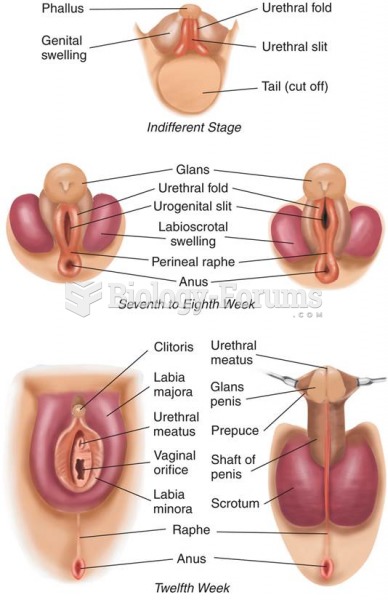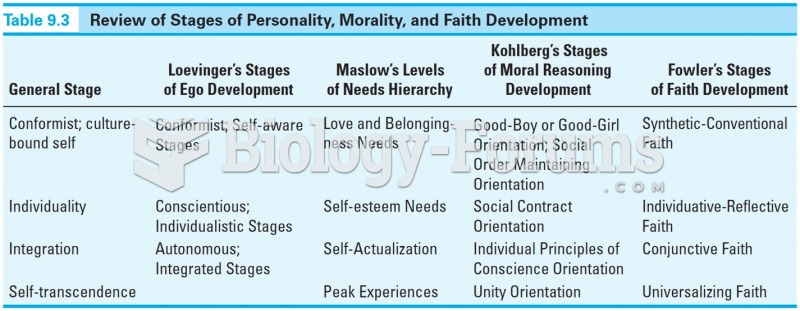|
|
|
There are more sensory neurons in the tongue than in any other part of the body.
The heart is located in the center of the chest, with part of it tipped slightly so that it taps against the left side of the chest.
Coca-Cola originally used coca leaves and caffeine from the African kola nut. It was advertised as a therapeutic agent and "pickerupper." Eventually, its formulation was changed, and the coca leaves were removed because of the effects of regulation on cocaine-related products.
Complications of influenza include: bacterial pneumonia, ear and sinus infections, dehydration, and worsening of chronic conditions such as asthma, congestive heart failure, or diabetes.
Approximately 500,000 babies are born each year in the United States to teenage mothers.







